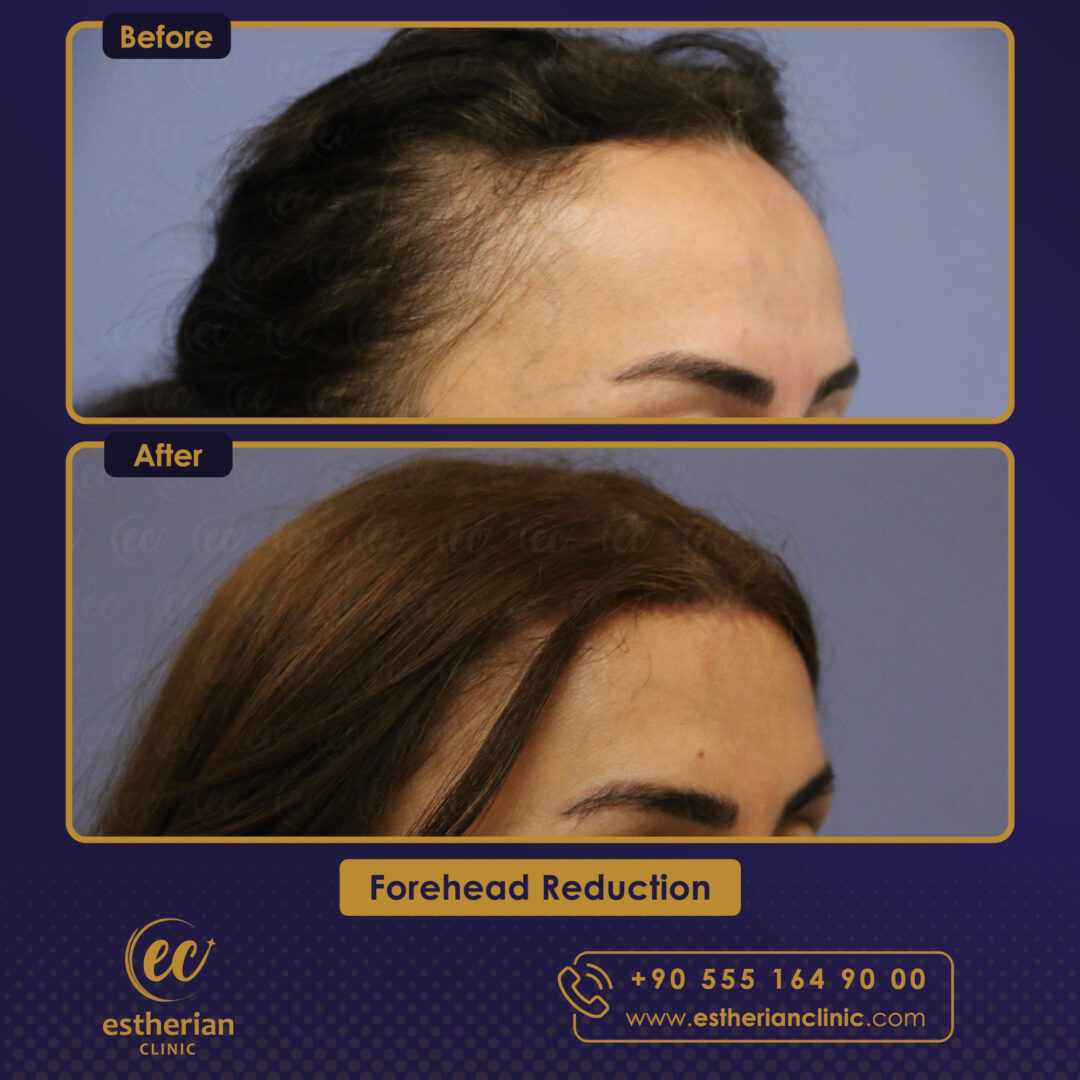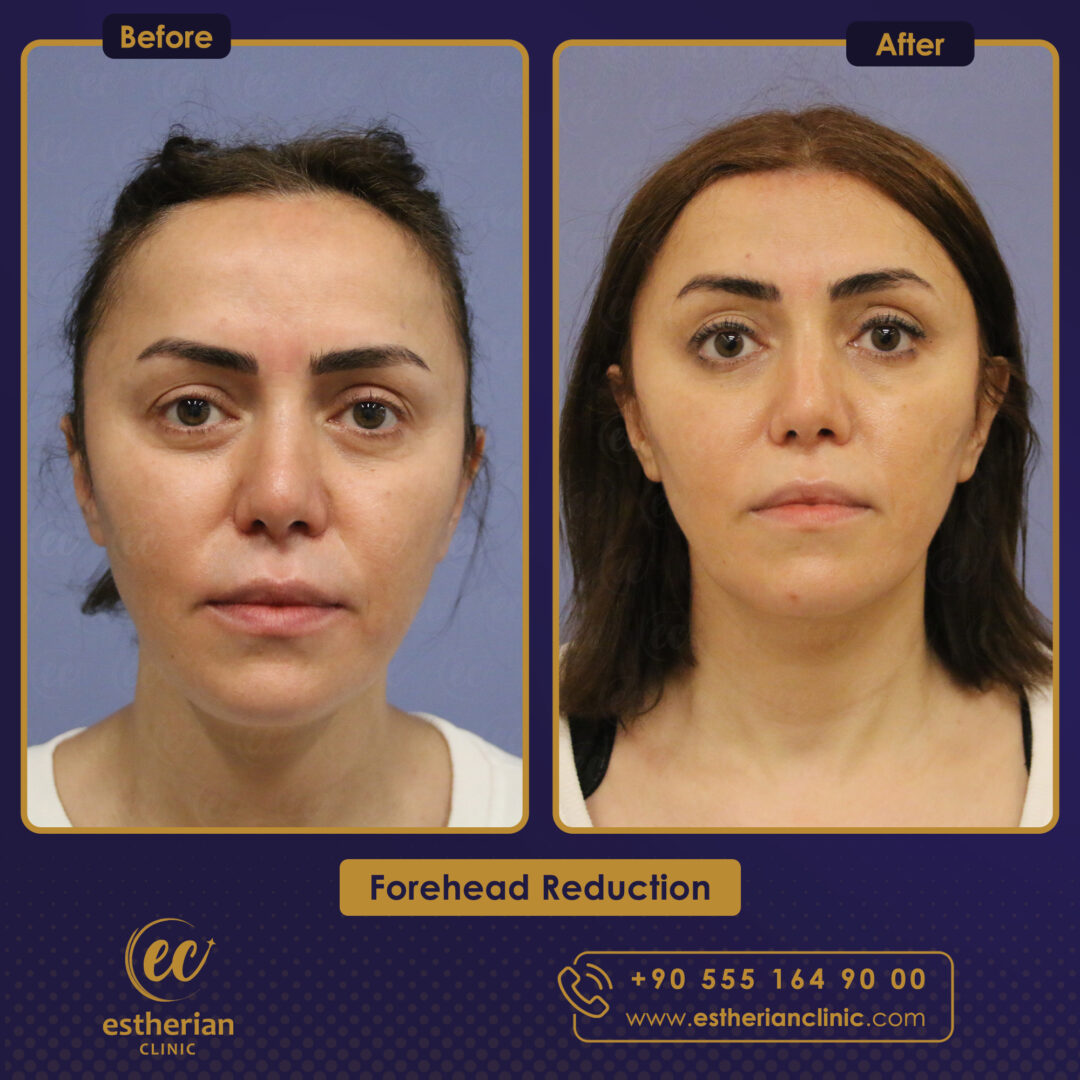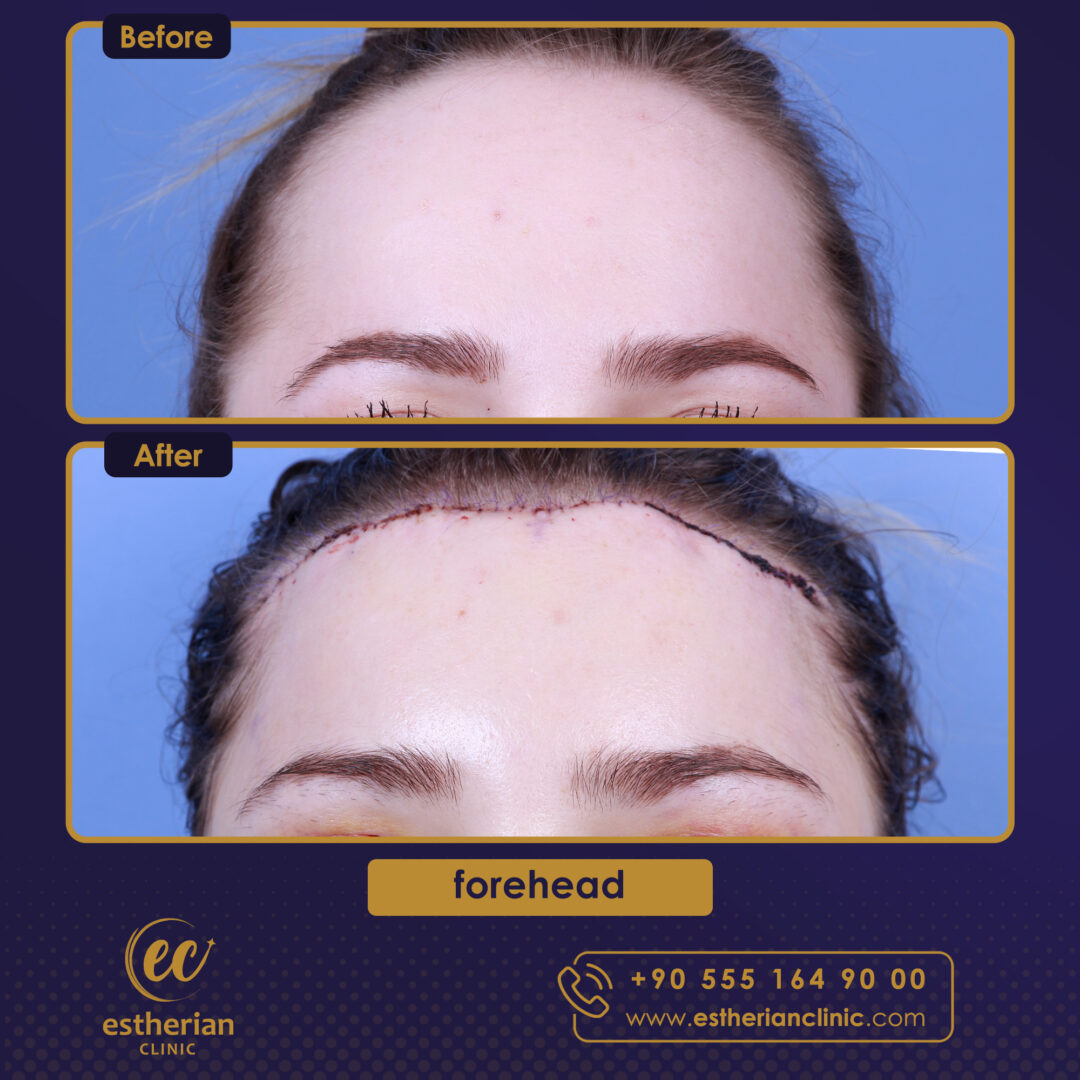Hairline lowering surgery in Turkey is becoming an increasingly popular option for those looking to achieve a more balanced and aesthetically pleasing facial appearance.
What is forehead reduction surgery?
Forehead reduction surgery is a cosmetic procedure that can help to reduce the height of your forehead.
Forehead for Male
The forehead reduction technique is suitable for male patients as well, although because of the typical male hair loss pattern, it is a little more challenging.
Men who have a high hairline may feel self-conscious about their appearance because it might give the appearance of male-type baldness.For this reason, men with an extended forehead frequently think about having a forehead reduction procedure. However, a hair transplant can also reduce the hairline.
Make sure to evaluate these things and talk with a qualified surgeon if you have been considering the advantages of a male hairline reducing operation.
If you suffer from male pattern baldness, you might be interested in learning more about hair transplantations or speaking with one of our doctors for advice.
An alternative to hairline lowering surgery is a hair transplant in Turkey, offering a natural and lasting solution.
Forehead for Female
Procedures to reduce the hairline are particularly common among young women.
Many women think about getting a hair transplant to lower their hairline or having their forehead reduced surgically since a high hairline might affect the overall symmetry of their face.
These procedures offer the face a more aesthetically pleasing and harmonious appearance.
Due to their higher hair density around the hairline, women make excellent candidates for this forehead reduction surgery. This therapy, in particular for ladies who don’t show symptoms of severe or genetic hair loss, can be quite beneficial.
Surgery to reduce the size of the forehead is more expensive and complex than a hair transplant. You might wish to think about female hair transplant procedures at Estherian Clinic if you’re willing to decrease your hairline.

Who’s a good candidate for forehead reduction surgery?
in general, a good candidate for forehead reduction is :
- high hairline and want to make it smaller
- people with inherited conditions
- furrowed lines above the nose or droopy eyebrows
- Low or heavy eyebrows and want to change them
Procedure
Before The Operation
The surgeon will perform appropriate medical examinations and blood tests prior to the operation.
The patient’s hair should be long enough to cover the scars during the recovery period.
During Surgery
The operation is done under general anesthesia. Forehead reduction surgery may be done in conjunction with other cosmetic procedures to achieve a more harmonious facial appearance.
The surgeon makes the surgery drawing, then an incision is made unevenly within the hairline to prevent a straight scar.
The forehead is removed at the hairline, and then the scalp is pulled from the back of the head forward as needed.
Usually, 1-1.5 cm advancement does not cause any problems. The scalp is then fixed to the bone using bio-absorbable material and degrades over time.
After Operation
You should follow the doctor’s instructions to take care of the surgical incision and keep it clean.
You can leave the hospital a few hours after the surgery.
After a week, you need to come back and remove the surgical thread.
There is periodic follow-up for approximately four weeks after surgery.
Your hair begins to grow along the scar six weeks after surgery and becomes almost invisible.

Recovery time
- you can expect a pretty quick recovery period from hairline lowering surgery, and you can often return go back to your place of residence within a few hours following the procedure.
- After the hairline operation, you must go back to the clinic for the sutures to be removed. After the procedure is over, you will be requested to Follow up with your doctor for the latest Updates on the healing process
- As with any procedure requiring an incision, you must ensure that the site is kept clean and given time to recover.
- Your surgeon and attendants will see to it that you have all the information and guidance you require for aftercare. This explains how to properly maintain your new hairline going forward.
Does the forehead reduction surgery leave scars
Surgery for forehead reduction requires making an incision, thus a transient, tiny scar will be visible along the new hairline.
Surgery for forehead reduction requires making an incision, thus a transient, tiny scar will be visible along the new hairline.
After the surgery, the scarring is pink and sensitive for some time. But because hair grows along the incision, the scar is typically almost entirely hidden.
The extent of scarring depends on your surgeon’s skill and how cautious you are after the procedure.
Our doctors in Estherian Clinic are experts in female hair transplant, afro-textured hair transplant, and forehead reduction surgery.
Following the aftercare instructions, staying out of the sun, moisturizing the incision area, and avoiding infection risks will all help to minimize scarring.
is it safe?
Surgery to lower the hairline is typically regarded as a safe procedure. However, it carries some dangers, like mild bleeding, numbness, infection, scars, and swelling, much like any other operation.
Make sure you are receiving care in a clinic with the necessary credentials and experience, and rigorously adhere to your surgeon’s instructions to prevent any issues before, during, or after your surgery.
What are the risks of the operation?
- Allergy to the incision area
- General anesthesia side effects
- Nerve damage in the surgical area
- Hair loss in the surgery area
How can I find a good surgeon?
During your consultation, you must take into account the years of experience of the surgeon, and if there are photos of clients before and after surgery, post-operative services and reviews on social media.
here at Estherian Clinic we offer you Dr. Cengizhan Ekizceli , the doctor has 13 years experience in Forehead operations and plastic surgery.
Hairline Lowering Turkey Patient Experience
To enhance your results after hairline lowering surgery, explore our guide on stem cell therapy for facial rejuvenation or learn how to sleep after a hair transplant.
Frequently Asked Questions (FAQs)
Is Forehead Reduction Surgery Painful?
There will be no pain during the operation because it will be performed under local anesthesia.
Is Forehead Reduction Surgery Permanent?
The results of a forehead reduction procedure are permanent.
Does Forehead Reduction Surgery Leave a Scar?
The scars will be temporary as they disappear over time.
Can Your Forehead Get Smaller With Surgery?
Usually, the forehead is reduced by 1 to 1.5 cm.
Related Articles About Hairline Lowering Surgery
Hairline lowering surgery, also known as forehead reduction, is a procedure that adjusts the position of the hairline to achieve a more balanced facial appearance. This technique is often utilized in facial feminization surgeries to create a lower, more traditionally feminine hairline. For https://www.mayoclinic.org/tests-procedures/facial-feminization-surgery/about/pac-20467962
The success of hairline lowering largely depends on scalp laxity—the flexibility of the scalp—which determines how much the hairline can be advanced. In cases where scalp laxity is insufficient, tissue expanders may be employed to facilitate greater advancement. https://en.wikipedia.org/wiki/Hairline_lowering
It’s important to note that while hairline lowering can provide immediate results, potential complications include scarring and temporary hair thinning. In some instances, hair transplants may be considered as an alternative or supplementary treatment to achieve the desired outcome. https://en.wikipedia.org/wiki/Hairline_lowering
For individuals experiencing hair loss, various treatments are available, ranging from medications to surgical options. Consulting with a healthcare professional can help determine the most appropriate course of action based on individual circumstances.
Understanding the nuances of hairline lowering and related procedures is crucial for those considering such treatments. Consulting with experienced surgeons and reviewing reputable sources can provide valuable insights into the benefived.
Hairline Lowering in Turkey Before and After






























